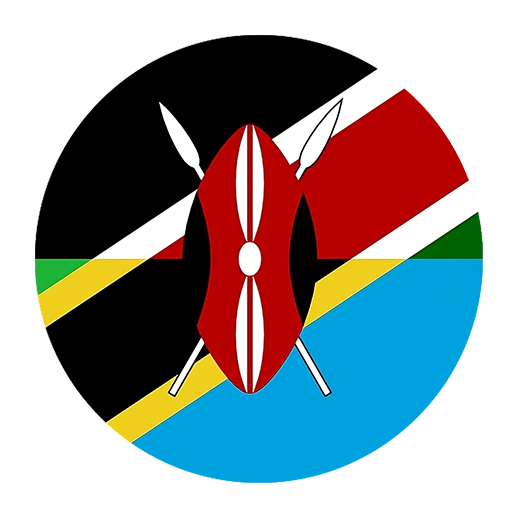Swahili, also known as Kiswahili, is a rich and fascinating language spoken by millions of people across East Africa and beyond. As with any language, understanding the nuances and subtleties of Swahili is crucial for effective communication. In this article, we will delve into the difference between two seemingly similar words: mwili and wili. While they might look and sound alike to the untrained ear, they have entirely different meanings and usages. By the end of this article, you will have a clearer understanding of these terms and how to use them correctly in context.
Understanding Mwili
Mwili is a Swahili noun that translates to “body” in English. It is used to refer to the physical form of a person or an animal. Understanding the various contexts in which mwili is used can help you grasp its full meaning and applications.
Usage in Anatomy
In the context of anatomy, mwili refers to the entire physical form of a living being. For instance, you might hear:
– “Mwili wa binadamu una mifupa mingi” – “The human body has many bones.”
– “Mwili wa samaki una magamba” – “The body of a fish has scales.”
In these examples, mwili is used to describe the physical structure of living creatures.
Usage in Health and Medicine
In health and medical contexts, mwili is often used to discuss bodily conditions, health statuses, and physical well-being. Examples include:
– “Mwili wangu unauma” – “My body is aching.”
– “Afya ya mwili ni muhimu sana” – “The health of the body is very important.”
Here, mwili is used to discuss physical health and bodily sensations.
Usage in Spiritual and Cultural Contexts
In various spiritual and cultural contexts, mwili may also be used to refer to the physical body as opposed to the soul or spirit. For example:
– “Roho na mwili ni vitu viwili tofauti” – “The soul and the body are two different things.”
– “Mwili wa marehemu ulizikwa jana” – “The body of the deceased was buried yesterday.”
In these sentences, mwili is juxtaposed with the spiritual aspect of a person, highlighting the distinction between the physical and the non-physical.
Understanding Wili
Wili, on the other hand, is an adjective that means “two” or “double.” While it may look similar to mwili, its usage is entirely different. Let’s explore the contexts in which wili is used.
Usage in Counting and Numbers
The primary use of wili is in counting and indicating the number two. For example:
– “Nina ndizi mbili” – “I have two bananas.”
– “Watoto wawili walicheza nje” – “Two children played outside.”
Here, wili is used to signify the number two, either as a standalone word or as part of a larger word (e.g., mbili).
Usage in Describing Pairs
Wili can also be used to describe pairs or things that come in twos. Examples include:
– “Viatu viwili” – “Two shoes” or “a pair of shoes.”
– “Soksi mbili” – “Two socks” or “a pair of socks.”
In these instances, wili is used to denote pairs or sets of two items.
Common Mistakes and Misunderstandings
Given the similarity in spelling and pronunciation, it is not uncommon for learners of Swahili to confuse mwili and wili. However, understanding their distinct meanings and usages can help avoid these mistakes.
Context is Key
One of the best ways to avoid confusion is to pay attention to the context in which these words are used. For example, if you are discussing anatomy, health, or spirituality, mwili is likely the correct word. If you are talking about numbers or pairs, then wili is the appropriate term.
Practice with Examples
Practicing with examples can also help solidify your understanding of these words. Try creating sentences using both mwili and wili to get a feel for their proper usage:
– “Mwili wake ni mzuri sana” – “Her body is very beautiful.”
– “Ana watoto wawili” – “She has two children.”
By practicing in this way, you can become more comfortable with these terms and reduce the likelihood of mistakes.
Cultural Insights
Understanding the cultural context of these words can also provide deeper insights into their usage. In many East African cultures, the concept of mwili is closely tied to ideas of health, spirituality, and community. For example, traditional healing practices often focus on the well-being of the mwili as a holistic entity, encompassing physical, mental, and spiritual health.
On the other hand, the use of wili in counting and describing pairs can reflect the communal nature of many African societies, where items are often shared or used in pairs. Understanding these cultural nuances can enhance your appreciation of the language and its rich cultural heritage.
Conclusion
In summary, while mwili and wili may appear similar at first glance, they have distinct meanings and usages. Mwili refers to the physical body and is used in contexts related to anatomy, health, and spirituality. Wili, on the other hand, means “two” or “double” and is used in counting and describing pairs.
By paying attention to context, practicing with examples, and understanding the cultural nuances, you can master the use of these words and enhance your Swahili language skills. Remember, language learning is a journey, and every new word and concept you learn brings you closer to fluency and deeper cultural understanding.
Happy learning!

